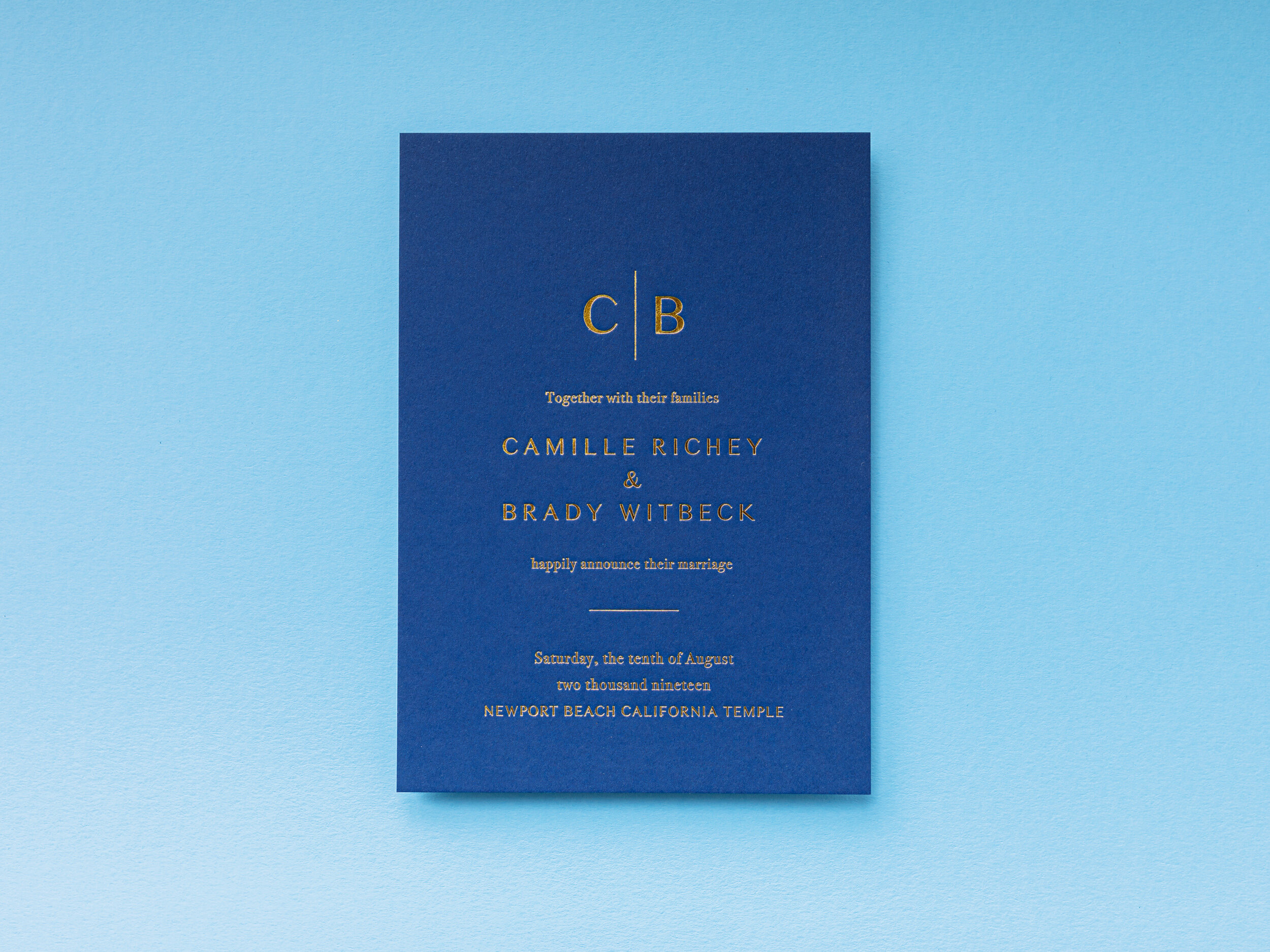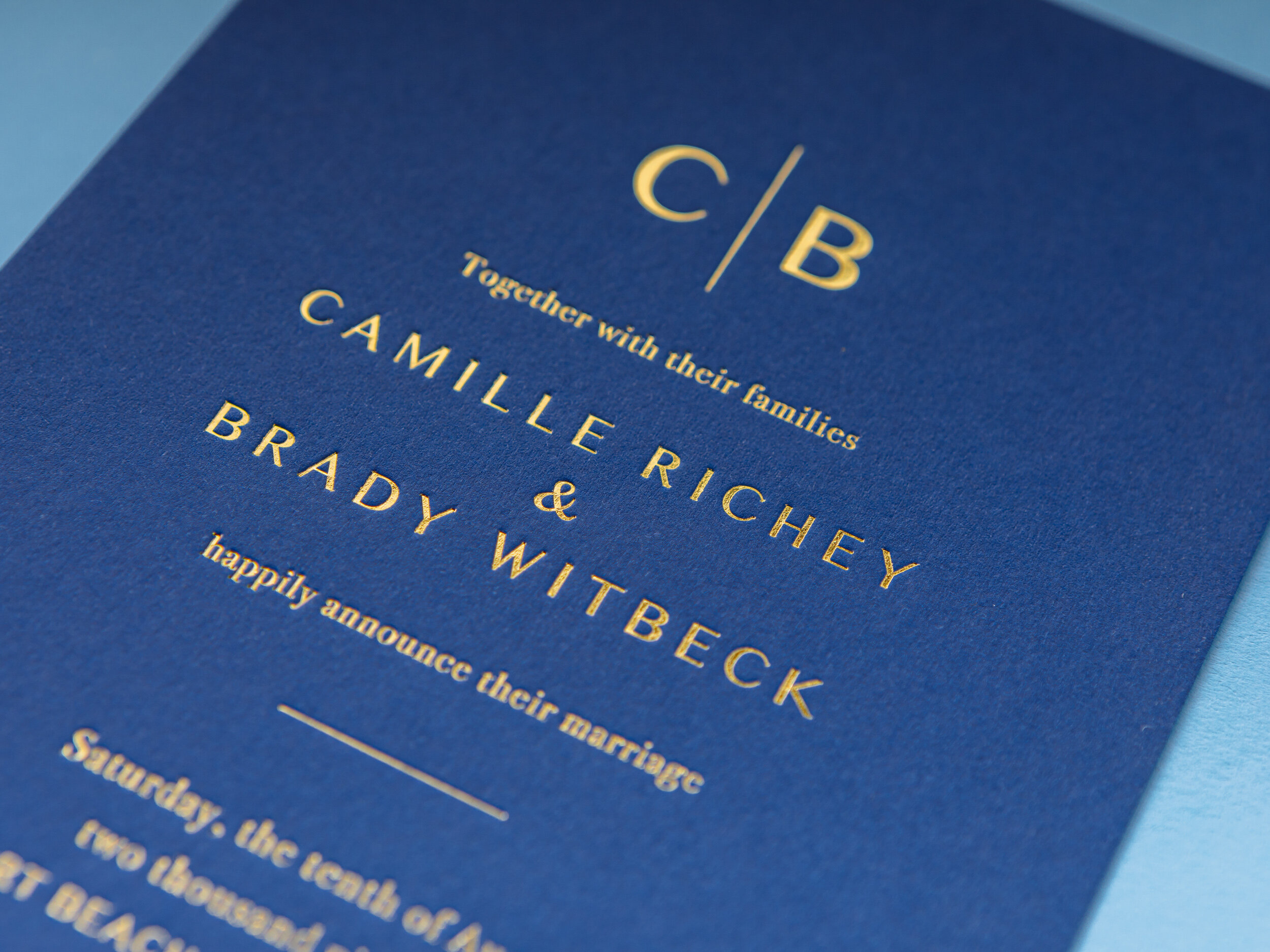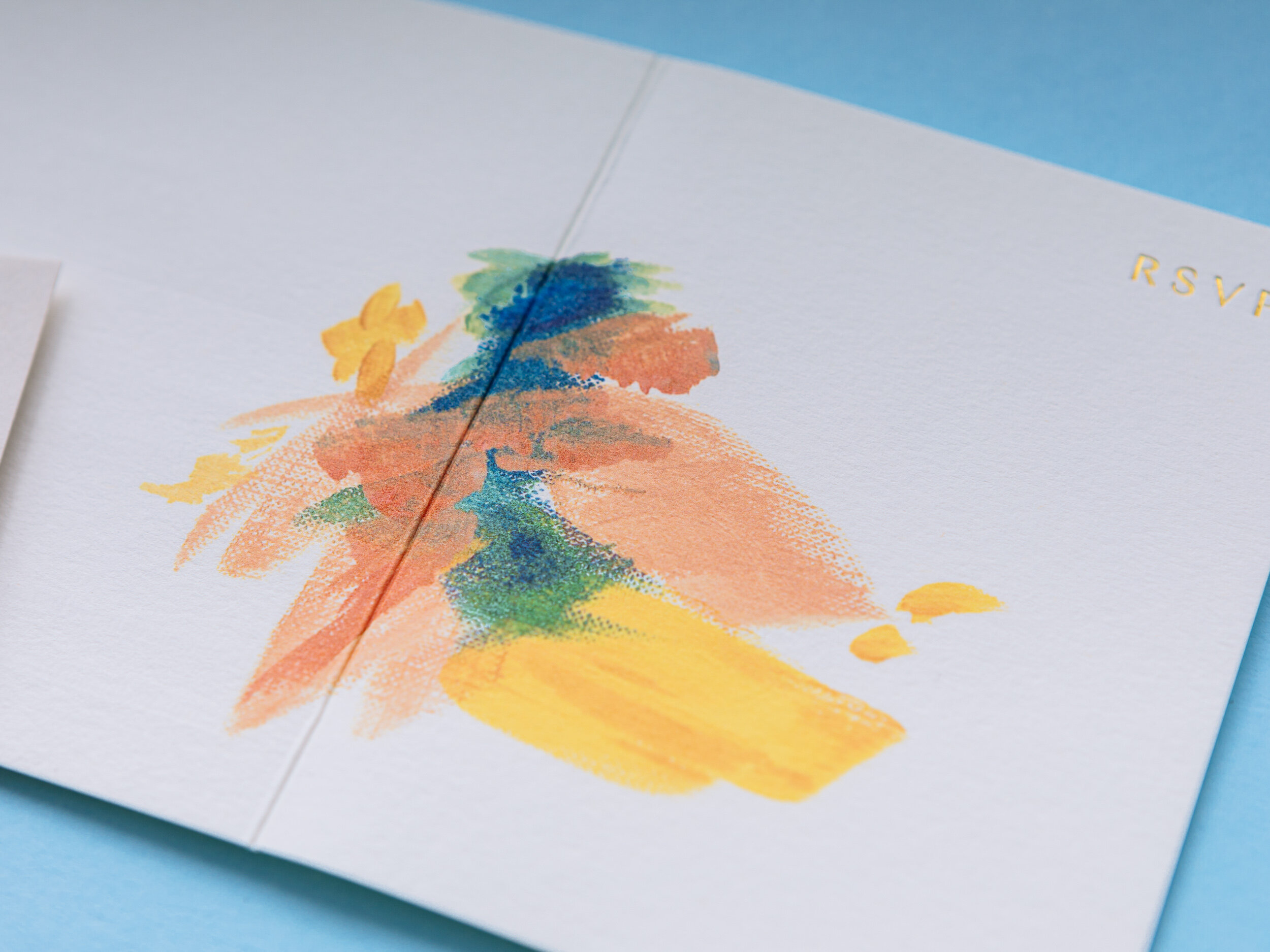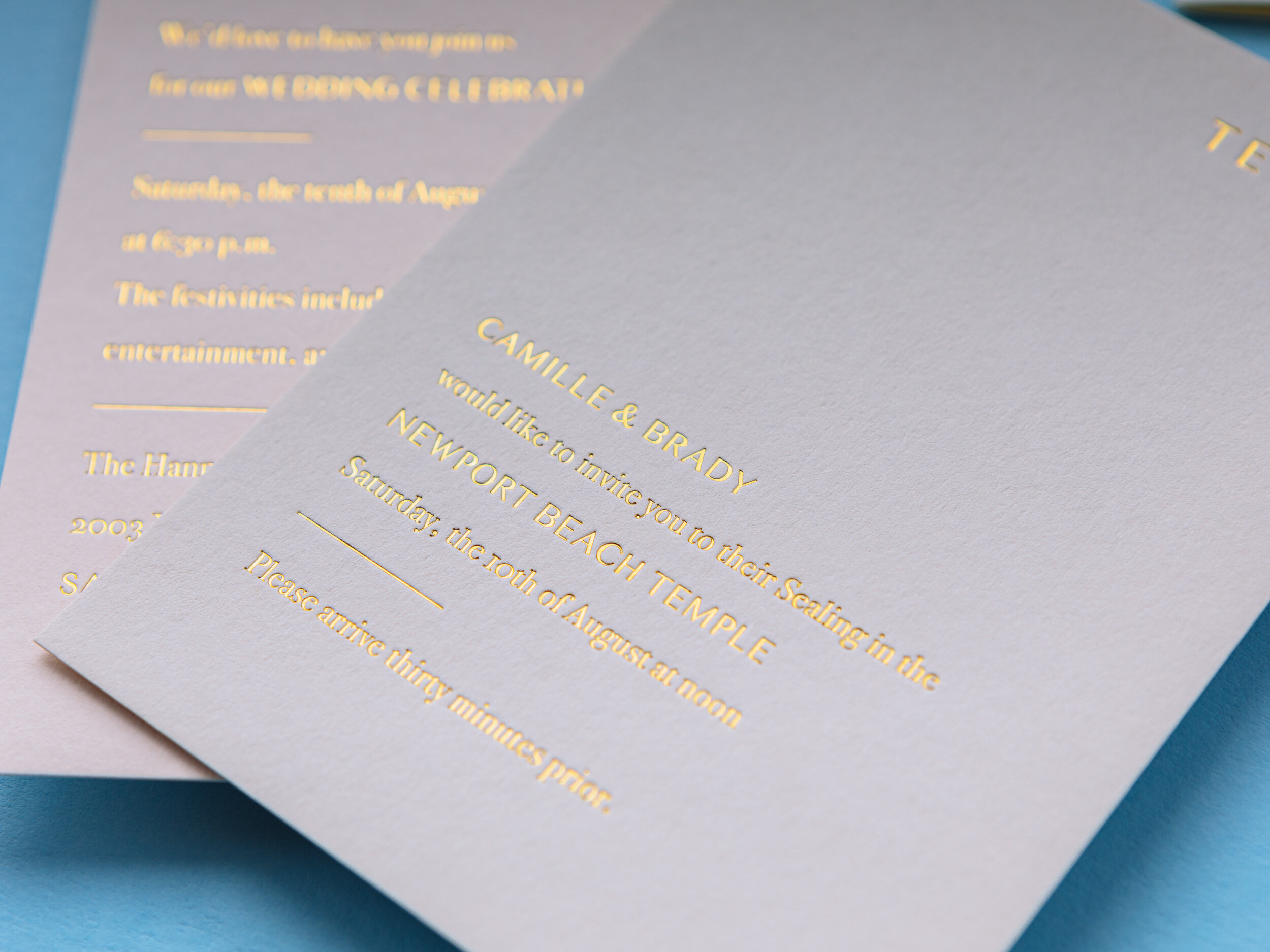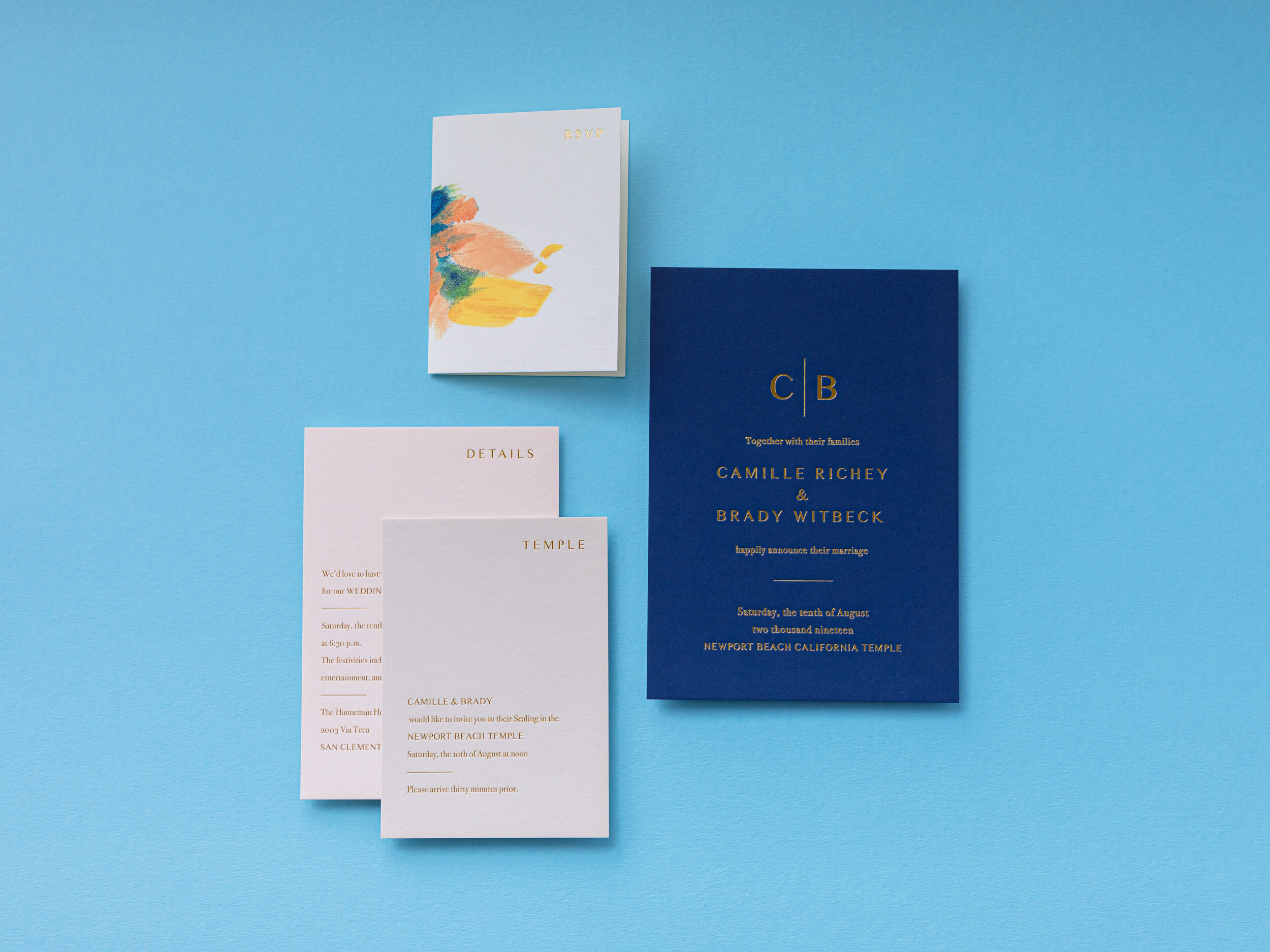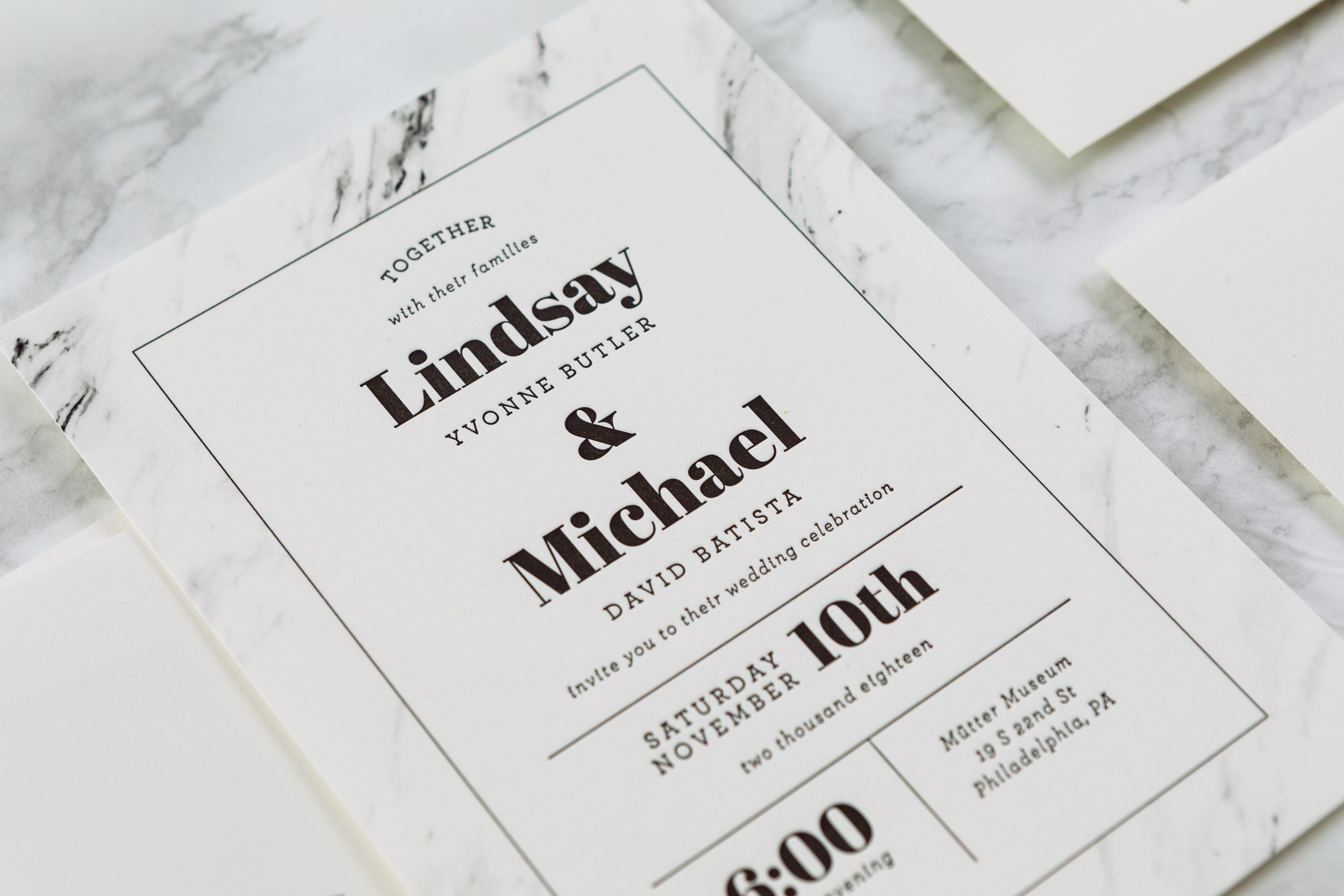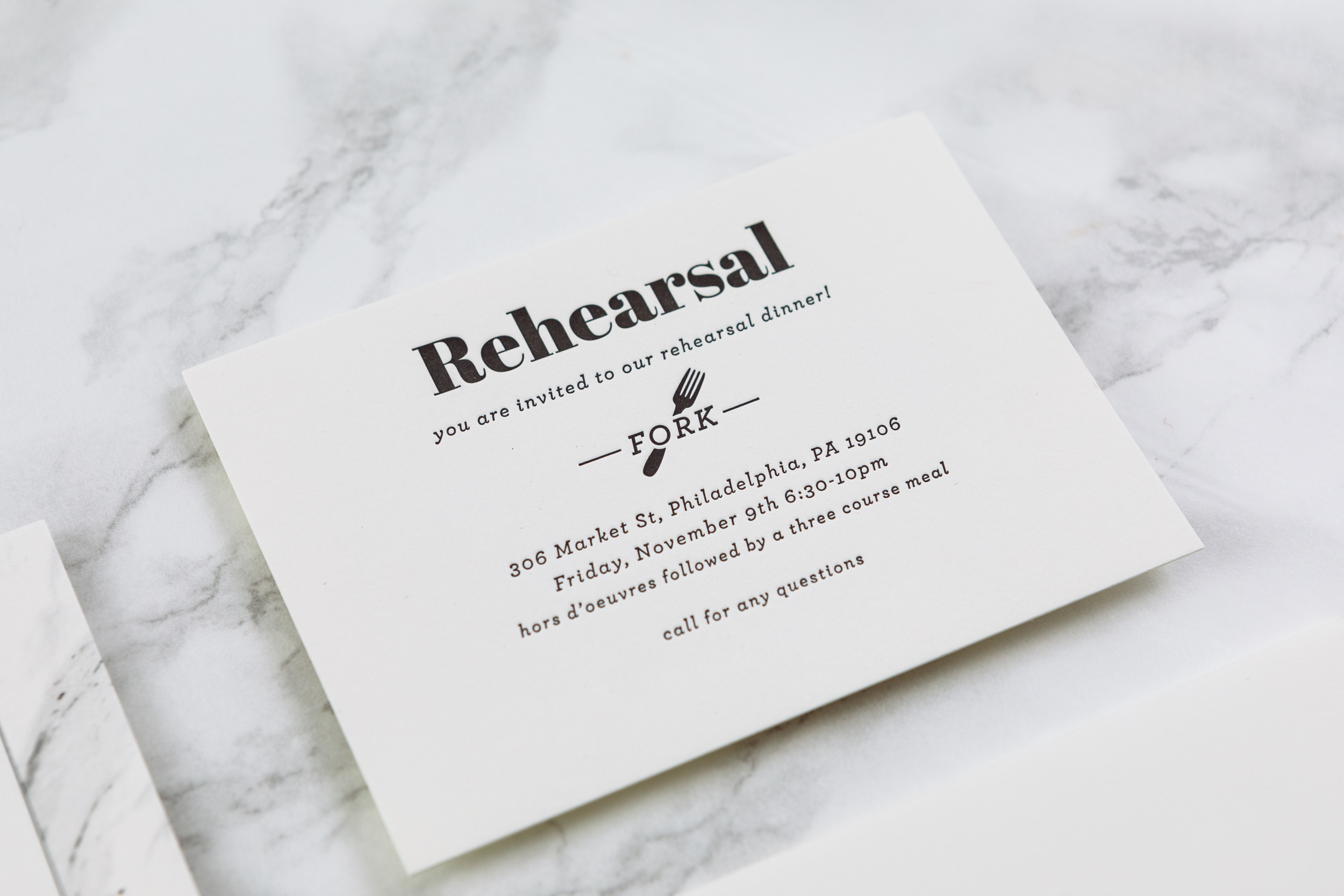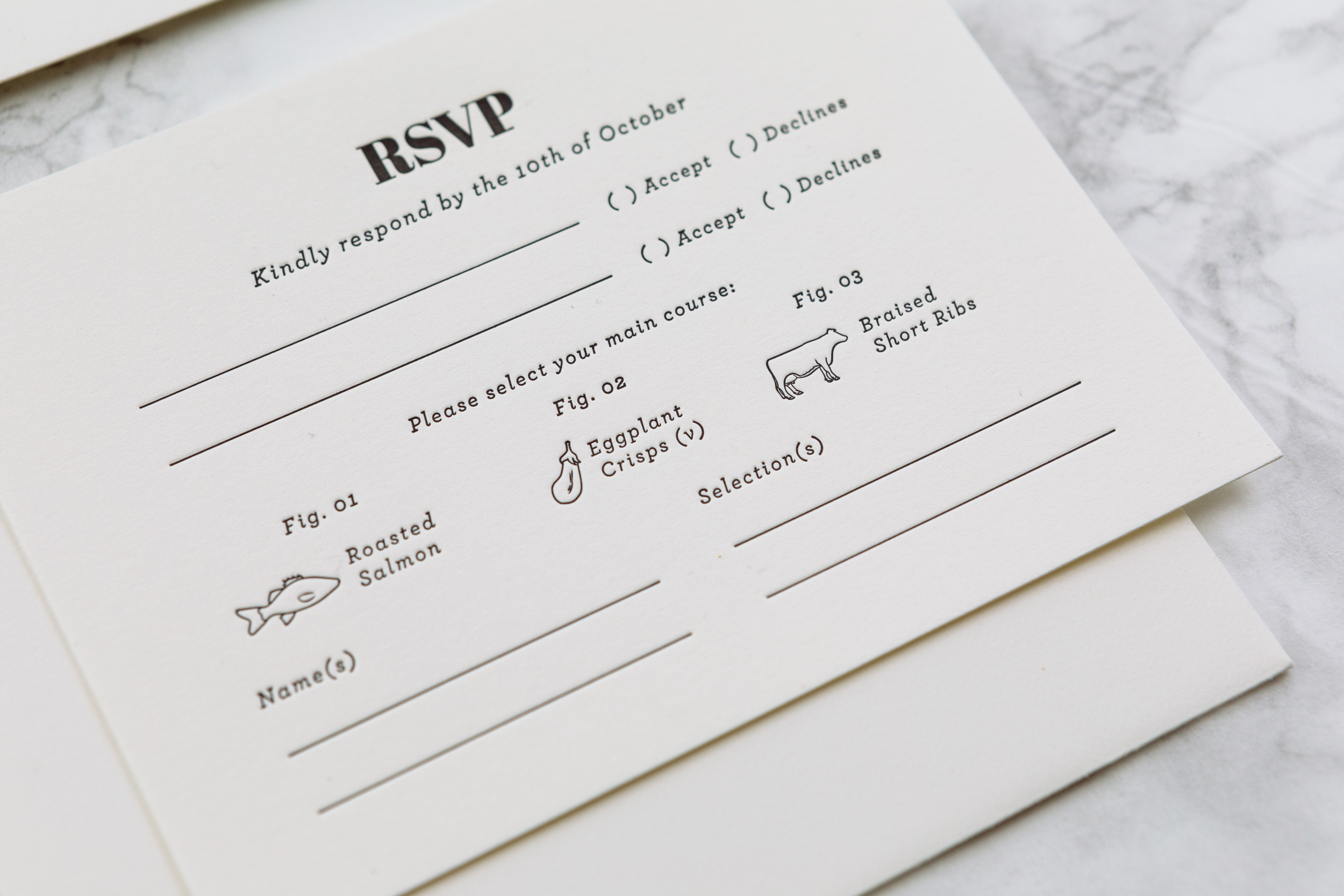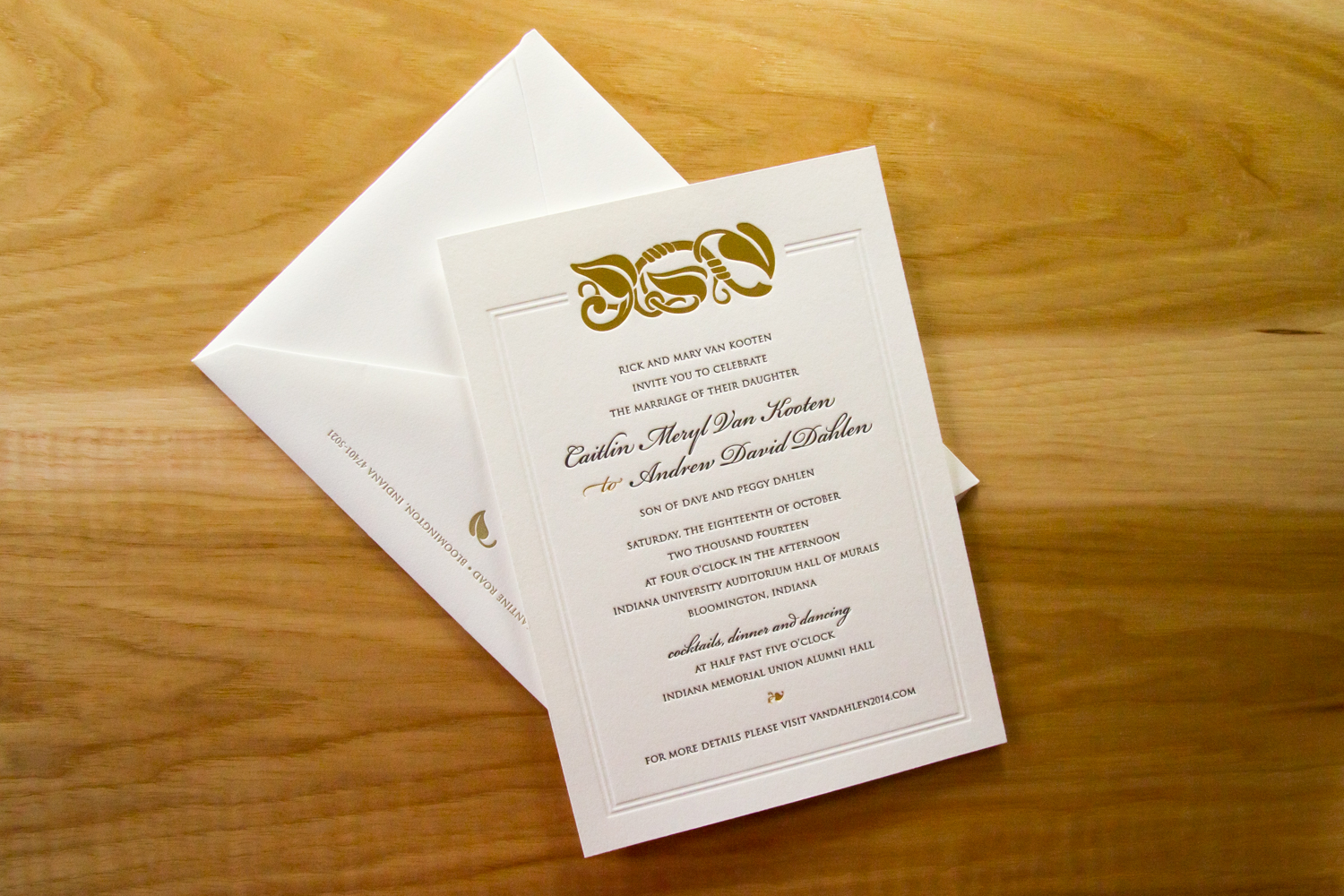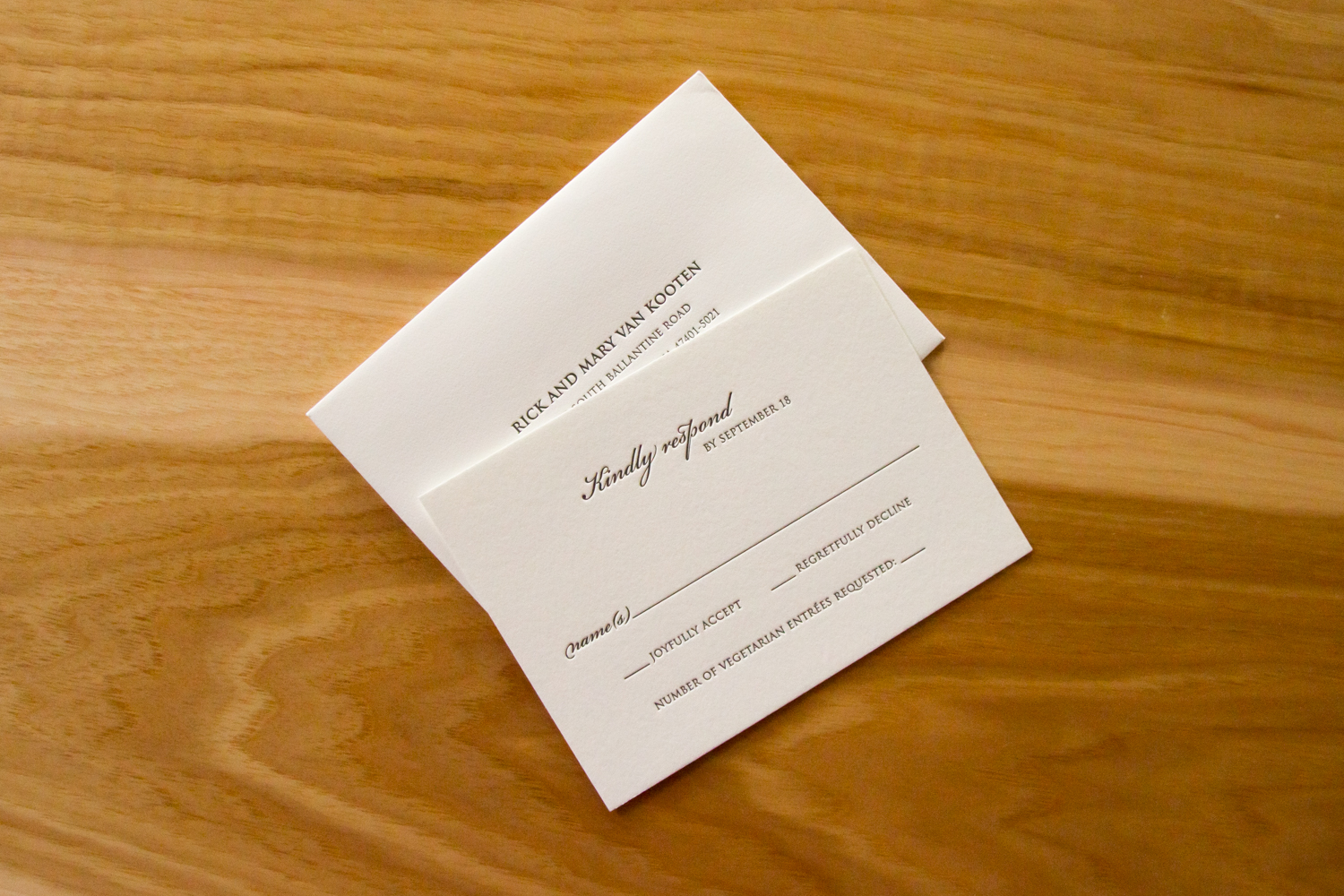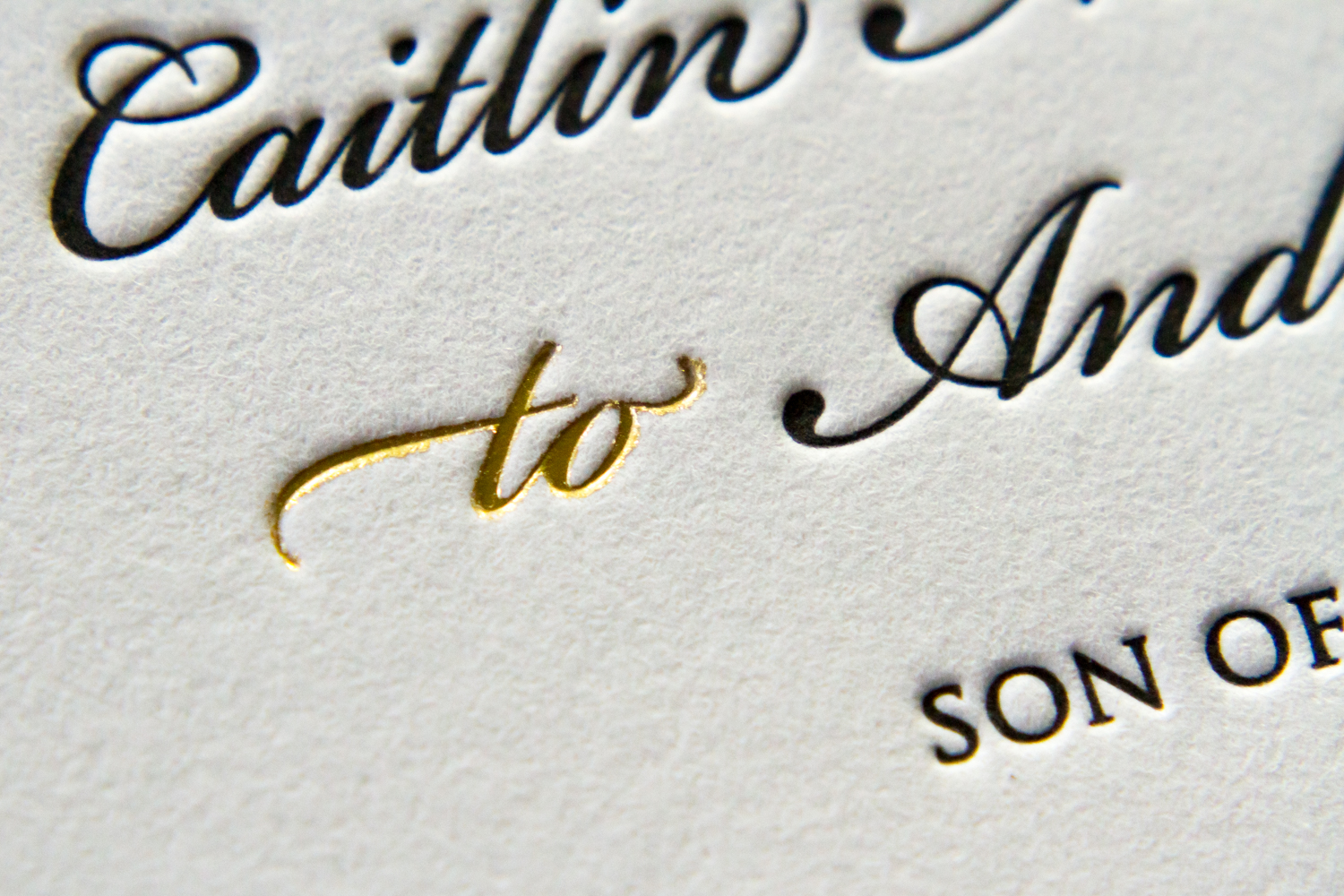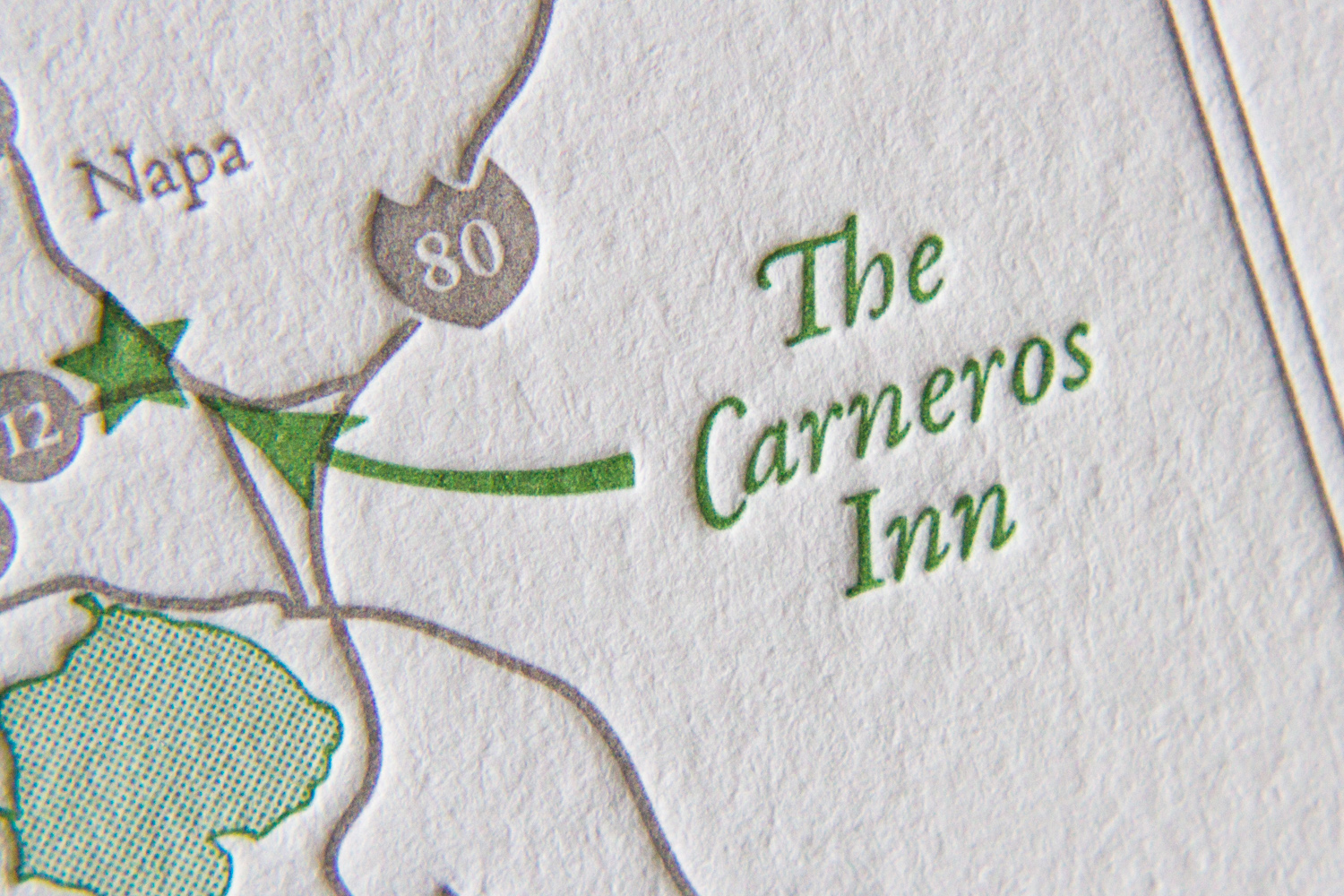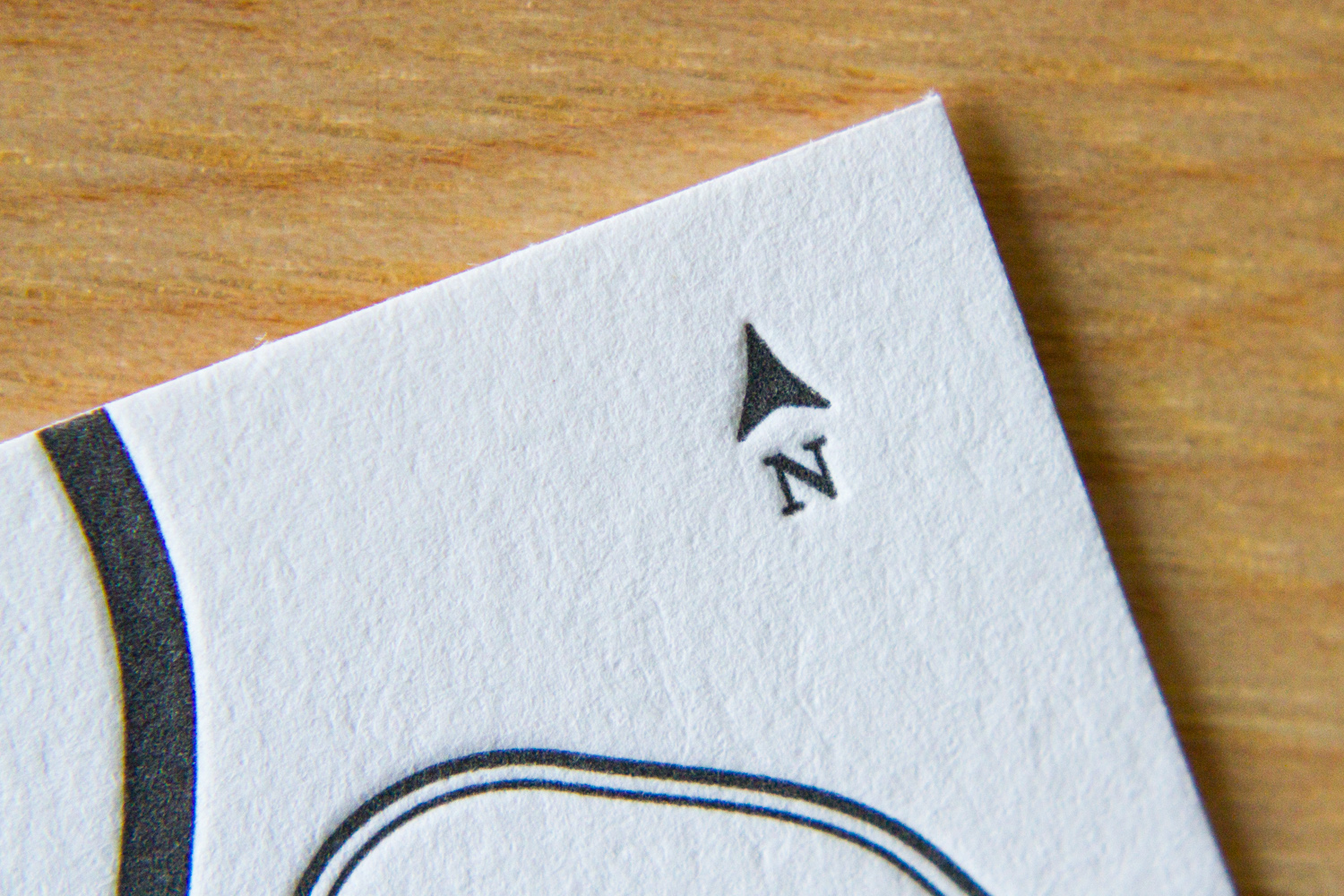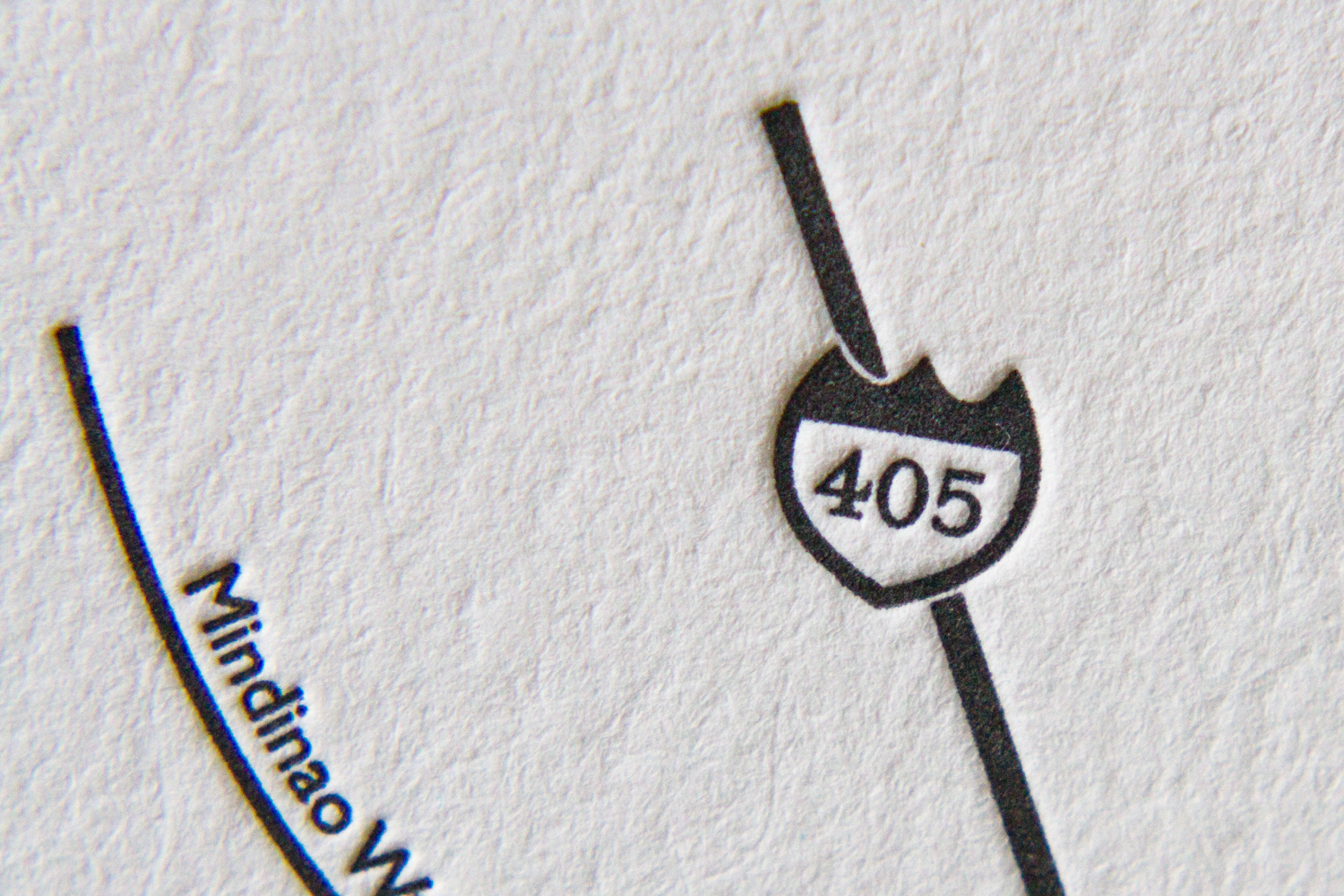Check out this stunning yet restrained client-designed set we printed with Gold Shine foil on various shades of Colorplan paper. The painting on the reply card was digitally printed — it’s an original piece of artwork by the mother of the bride.
INVITATION Gold Shine foil on 540g Colorplan Cobalt
DETAILS CARD Gold Shine foil on 350g Colorplan Vellum
TEMPLE CARD Gold Shine foil on 350g Colorplan Mist
RSVP CARD Gold Shine foil and digital printing on 270g Colorplan Natural
